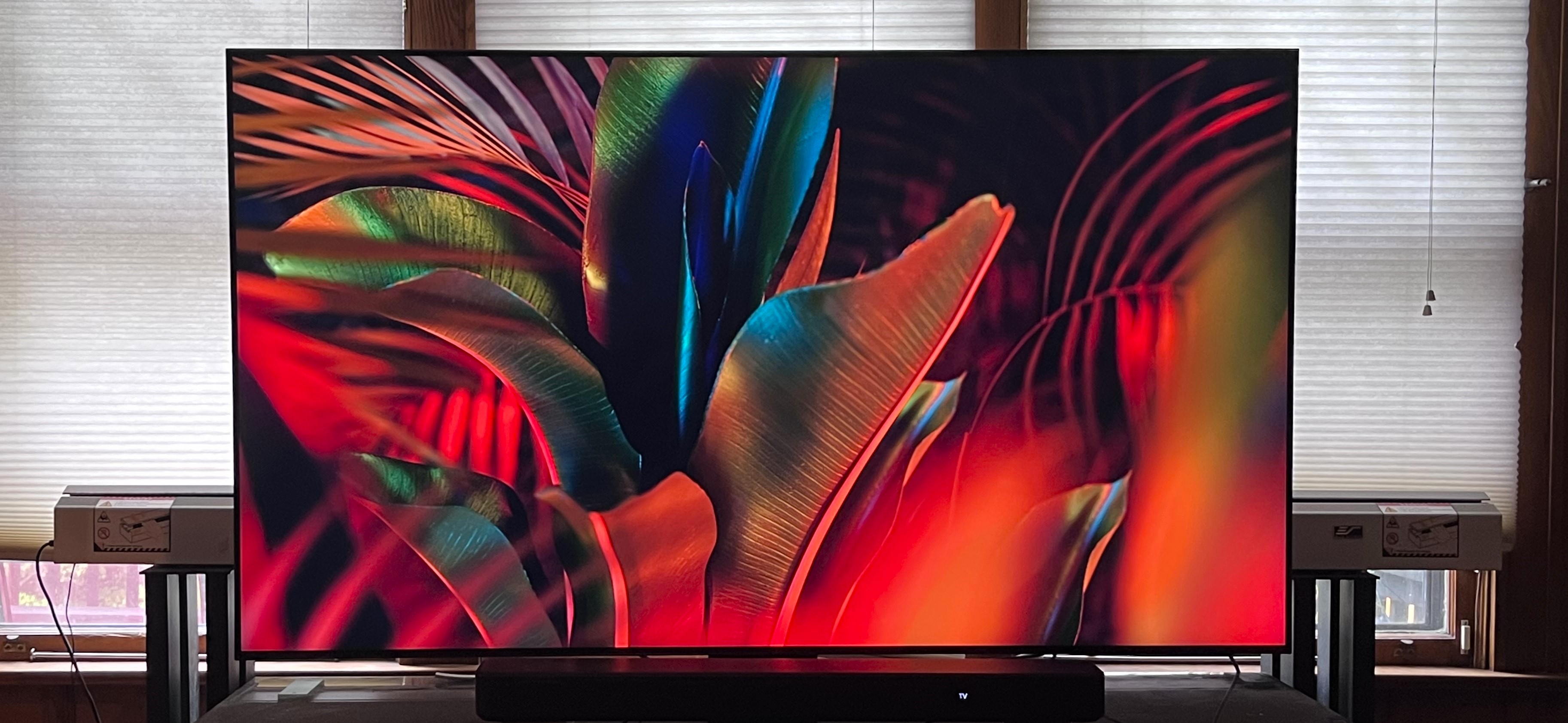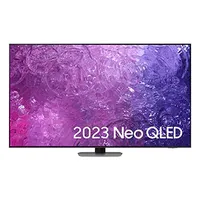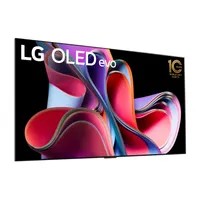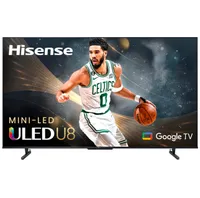TechRadar Verdict
Samsung’s entry-level Neo QLED series, the QN85C, brings the benefits of mini-LED backlighting to a lower-cost TV. While it lacks the powerful brightness and anti-glare screen of its step-up Samsung Neo QLED siblings, the QN85C series is a great option for gaming and also performs well for watching movies. It’s somewhat of a toss-up from a value standpoint considering the tough budget mini-LED competition, but the QN85C’s appealing design and strong feature set nonetheless make it well worth consideration.
Pros
- +
“Infinite” contrast
- +
4 HDMI 2.1 inputs
- +
Great gaming features and performance
Cons
- -
Some backlight blooming
- -
Average peak brightness
- -
Pricey compared to budget competition
Why you can trust TechRadar
Samsung QN85C TV: two-minute review
Samsung’s QN85C is the company's entry-level Neo QLED series. It has this name because it features a QLED display with a mini-LED backlight, the latter being a feature Samsung's standard QLED models lack. The benefits of mini-LED backlighting are typically higher brightness and more refined local dimming, although both those factors can vary from model to model.
The good news with the QN85C series is that it’s packed with many of the same features found in the step-up Samsung QN90C series. These include a Neural Quantum Processor to upscale HD images to 4K resolution and support for the HDR10, HDR10+, and HLG HDR formats (but not Dolby Vision, which has historically been the case with Samsung TVs). There’s also the Samsung Gaming Hub for cloud-based gaming and four HDMI 2.1 ports to plug in multiple next-gen game consoles.
The less good news with the QN85C is that it lacks the high peak brightness that QN90C TVs deliver along with those models’ anti-glare screen. Both of those factors make Samsung’s step-up series a better option for daytime sports viewing in bright rooms, though the QN85C’s performance with the lights dimmed is very good, letting it hold up well against both its pricier sibling and the best 4K TVs in general.
Another area where the QN85C holds up against pricier TVs is its design. With such a slim profile (around 1-inch), the set looks good from all angles and comes with a sturdy and attractive hexagonal stand. It has the same solar-powered remote control (no batteries required!) as other Samsung Neo QLED models and its built 2.2.2-channel speaker system has Dolby Atmos support and can work in tandem with Samsung soundbars for a more immersive audio experience.
As far as value goes, you’ll only have to spend a bit more for Samsung’s more feature-packed and better-performing QN90C, and you can easily spend less for a mini-LED TV from a budget brand like TCL or Hisense. This makes the QN85C sort of a straggler when it comes to value. But the QN85C’s solid overall performance, along with its superior smart TV interface and excellent gaming features still make it well worth consideration.
Samsung QN85C TV review: price and release date
- Release date: February 21, 2023
- QN43QN85C: $1,099 / AU$1,999
- QN50QN85C: $1,199 / AU$2,499
- QN55QN85C: $1,299 / £1,299 / AU$1,999
- QN65QN85C: $1,699 / £1,599 / AU$2,499
- QN75QN85C: $2,199 / £2,799 / AU$3,299
- QN85QN85C: $2,599 / AU$4,499
QN85C TVs are Samsung’s entry-level Neo QLED series. They use a mini-LED backlight, which is a feature that distinguishes them from the company’s regular QLED offerings. The level up series is the QN90C, which is priced slightly higher and provides a number of picture and sound quality enhancements along with a built-in ATSC 3.0 “NextGen” TV tuner.
The QN85C series comes in a wide range of screen sizes, starting at 43 inches and scaling up to 85 inches. You’ll only find the full range available in the US, however, with UK offerings currently limited to 55, 65, and 75-inch options. Pricing for the series has dropped anywhere from 15% to 30% depending on screen size since the TVs first became available in February 2023, and if history is any indication, are likely to drop lower as we push toward the end of the year.
Sign up for breaking news, reviews, opinion, top tech deals, and more.
Samsung QN85C TV review: specs
| Screen type: | QLED with mini-LED |
| Refresh rate: | 120Hz |
| HDR support: | HDR10+, HDR10, HLG |
| Audio support: | Dolby Atmos |
| Smart TV: | Tizen |
| HDMI ports: | 4 HDMI 2.1 |
| Built-in tuner: | ATSC 1.0 |
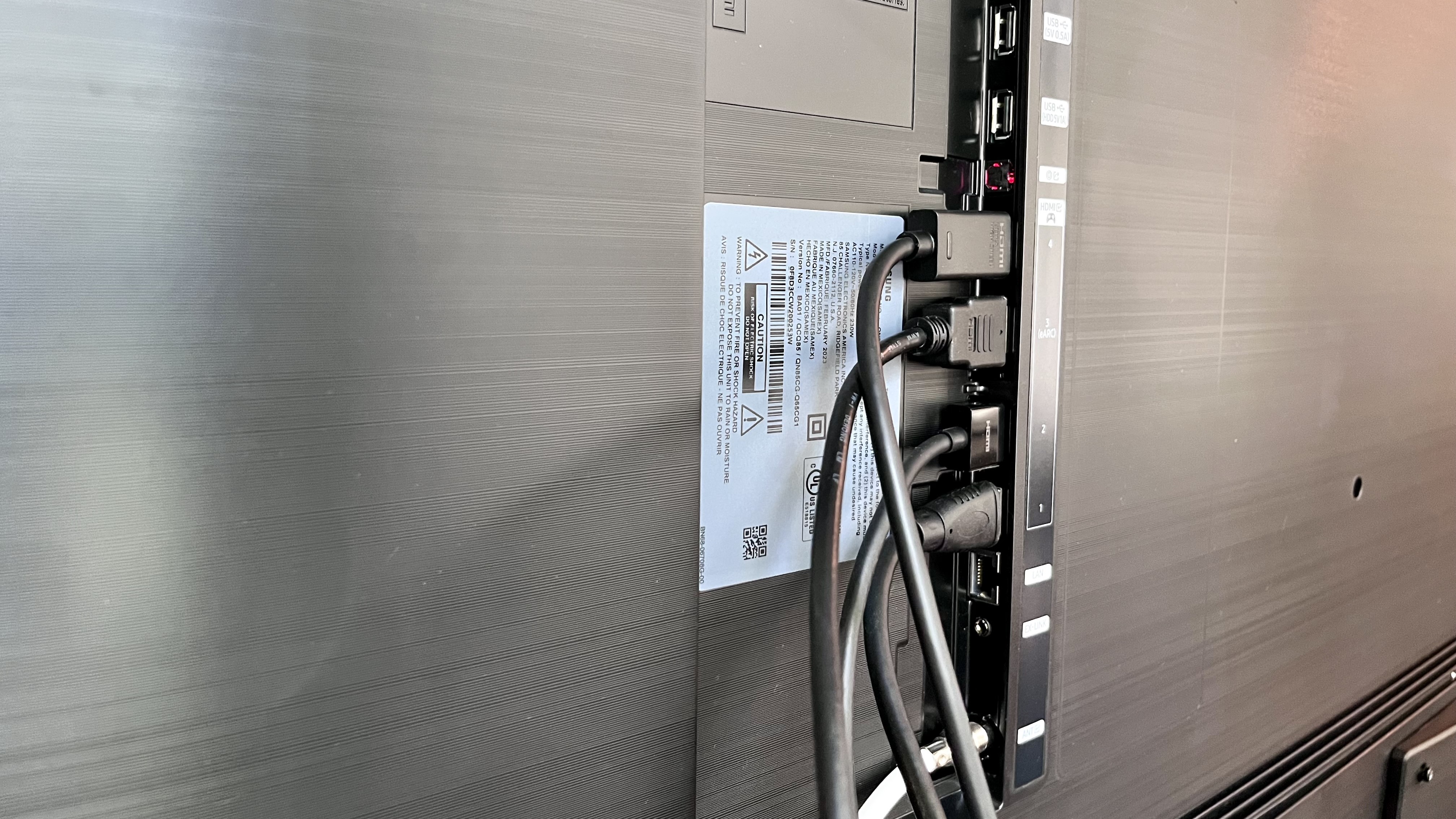
Samsung QN85C TV review: features
- Mini-LED backlight with local dimming
- Native 4K with HDR10+ dynamic range
- Gaming Hub for cloud gaming
Samsung QN85C series TVs feature a QLED display with mini-LED backlighting and full-array local dimming. They use the same Neural Quantum Processor found in the step-up QN90C series models to upscale HD images to 4K resolution and Neo Quantum HDR+ to dynamically process images with high dynamic range. Like other Samsung TVs, HDR support is limited to the HDR10, HDR10+, and HLG formats, with no provision for Dolby Vision. A Wide Viewing Angle feature helps to improve picture performance when watching from off-center seats, though it’s less effective than the Ultra Wide Viewing Angle feature found on the step-up QN90C.
Samsung’s Tizen smart TV interface is used for streaming and smart home control, and the TV has built-in Alexa and Bixby voice command support along with support for Google Assistant devices. An Ambient mode can be activated that offers a wide assortment of still and moving images for display when the TV isn’t actively being used, and you also have the option to upload your own pictures.
The QN85C series sports Samsung’s NeoSlim Design and has a built-in 2.2.2-channel Dolby Atmos speaker system. An Object Tracking Sound feature helps lock effects in movie and TV soundtracks with the onscreen action and Q-Symphony 3.0 lets you combine the TV’s speakers with an external Samsung soundbar for even bigger and more immersive sound.
Gamers will appreciate Samsung’s Gaming Hub, which offers a central location for accessing Xbox, Nvidia GeForce Now, Amazon Luna, Utomik, and other cloud gaming services. Support is provided for a wide array of Bluetooth game controllers on QN85C series TVs, and there are four HDMI 2.1 inputs that support 4K 120Hz input from a PS5 or Xbox Series X game console.
- Features Score: 4.5/5
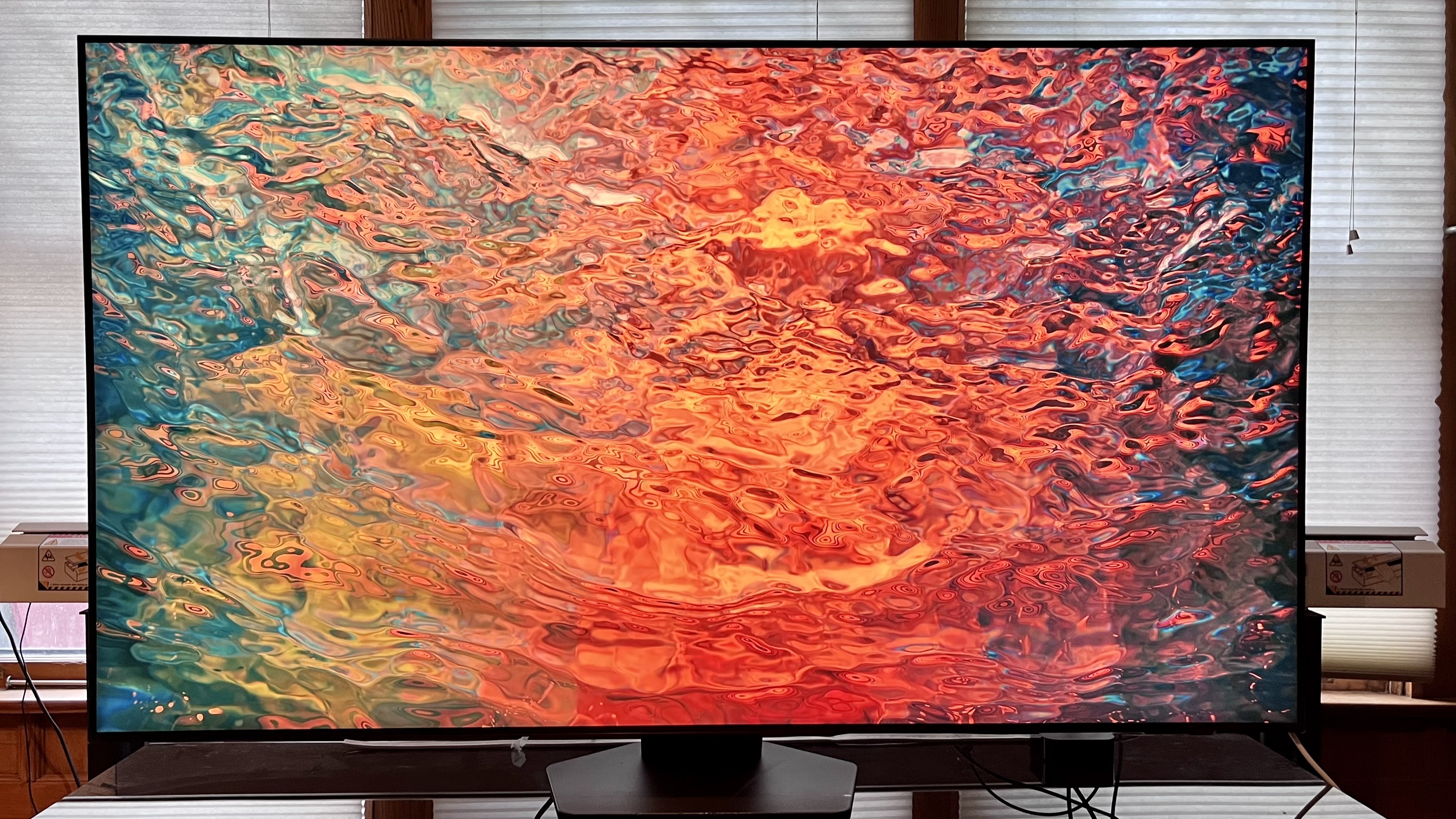
Samsung QN85C TV review: picture quality
- Average peak brightness
- Deep blacks with detailed shadows
- Some backlight blooming
The 65-inch QN85C TV Samsung sent me to test had a peak HDR brightness of 955 nits in Standard picture mode and 853 nits in Movie mode when measured on a 10% white window pattern. A Filmmaker mode is also available on the TV, but Movie turned out to be the brighter and more accurate option. While that brightness level falls short of the 1,787 nits I measured on the Samsung QN90C, it was more than sufficient for viewing in dim or dark room lighting conditions.
Similar to the QN90C, the QN85C’s full-array local dimming backlight lets it display full black at 0 nits, resulting in “infinite” contrast. Movies I watched with dark scenes showed very good shadow definition, and the TV has a Shadow Detail adjustment that lets you fine-tune the level of near-black detail to taste.
TVs that use local dimming tech to enhance contrast are prone to backlight “blooming” effects and the QN85C was no exception here. It was most noticeable on white-on-black movie titles, where the blooming appeared as a faint halo at the black/white transition, but could also be seen to a lesser extent in more typical images and on widescreen movies with black letterbox bars.
The QN85C’s color balance in Movie picture mode with the default Warm color temperature setting active skewed slightly toward red, with Delta E values averaging 3.1 across the full grayscale (we typically look for these to land below 3), though color point Delta E values averaged out to 1.2. An easy correction could be made by changing the TV’s gamma setting to 2.2, which dropped the grayscale Delta E average to well below 3.
Measurements made with Portrait’s Calman color calibration software showed coverage of DCI-P3 (the color space used for mastering 4K movies and digital cinema releases) to be 93.5%, and BT.2020 to be 70.1%. Those results closely match what was measured on the Samsung QN90C, though it’s also an average performance level that’s been equaled or even bested by budget mini-LED TVs we’ve tested from TCL and Hisense.
Unlike the step-up QN90C, the QN85C lacks an anti-glare screen coating. Between this and the set’s relatively limited peak brightness, it isn’t the best choice for daytime or bright room viewing, where you’re likely to get contrast-limiting screen reflections. The QN85C does have a Wide Viewing Angle feature, and while this didn’t prove to be as effective as the QN90C’s Ultra Wide Viewing Angle feature, it still allowed for pictures to retain good contrast and color saturation when watching from off-center seats.
As usual, I started out my viewing tests with the Spears & Munsil Ultra HD Benchmark disc. Images of nature in the montage section looked clean and had strong contrast, and when I switched from an HDR10 version graded at a standard 1,000 nits peak brightness level to one graded at 10,000 nits, images came across with good highlight detail due to the TV’s high-quality HDR tone mapping. I did note some backlight blooming artifacts towards the end of the montage reel, specifically in an image of a honey dripper against a black background.
When I reviewed the Samsung QN90C, I was very impressed by the TV’s motion handling, which was shown to positive effect when I checked out a reference scene from the 2021 James Bond film No Time to Die on 4K Blu-ray disc. A shot of a cemetery on a rocky hillside looked solid and retained detail as the camera panned across it, and the same shot looked equally good on the QN85C without having to turn on its Picture Clarity setting. There was a slight degree of judder visible in the image, but that could be easily reduced by applying a degree of judder reduction in the Picture Clarity menu’s Custom mode.
Moving on to other reference clips from 4K disc, scenes from Dune (2021) came across as noise-free and had excellent shadow rendition and strong HDR highlights. Spider-Man: Across the Spider-Verse was displayed with its rich, near-psychedelic color palette intact, and there was a high level of detail visible in the finely textured images. Even older movies like Boyz n the Hood that I streamed in HD quality looked punchy and crisp on the QN85C, with the TV’s Neural Quantum Processor upconverting images in a clean and noise-free manner.
- Picture quality score: 4/5
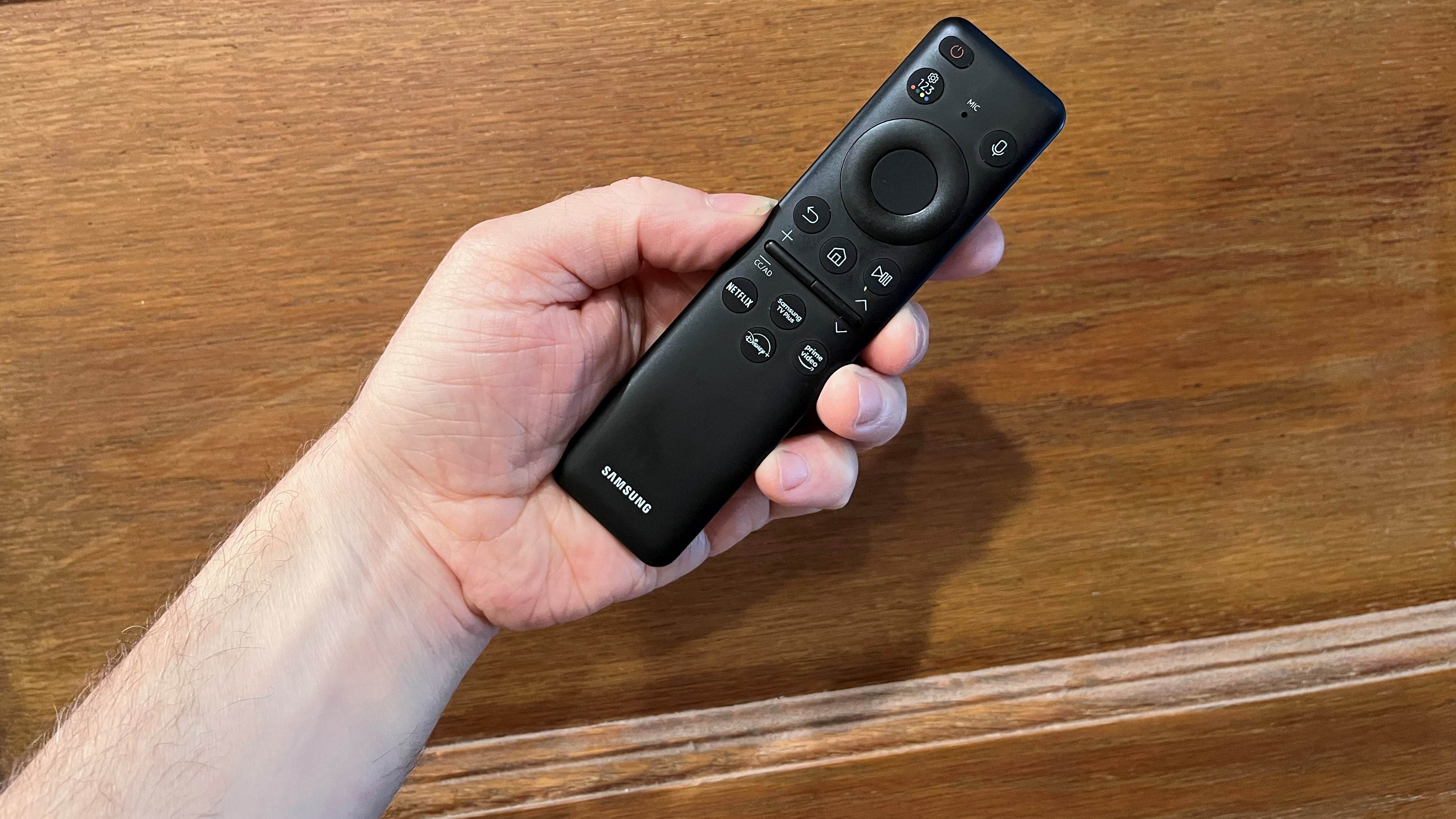
Samsung QN85C TV review: sound quality
- 2.2.2-channel Atmos speakers
- Spacious sound but limited bass
- Q-Symphony feature combines TV’s audio with soundbar
Samsung’s QN85C has decent built-in sound for such a slim TV. Its Dolby Atmos-compatible 2.2.2-channel speaker system is powered by 60 watts, and there’s also a Bluetooth headphone output option for private listening.
When watching movies, there was a good sense of spaciousness to the sound, and the TV’s Object Tracking Sound Plus feature added definition to dialogue and the trajectory of sound effects across the screen. You can push the volume to a relatively loud level before hearing any compression, though doing so won’t help compensate for the built-in TV speakers’ relative lack of bass.
Instead of the typical range of TV audio modes such as Movie, Music, Sport, Samsung limits your options to two: Standard and Amplify. While Standard should be fine for most situations, Amplify boosts the sound across the full frequency range to make it louder and clearer. Of course, you’ll get much better results by pairing the QN85C with one of the best Dolby Atmos soundbars, and if you opt for a Samsung Q- or S-Series model you can take advantage of the TV’s Q-Symphony feature, which combines the set’s built-in speakers with the soundbar for an enhanced presentation.
- Sound quality score: 4/5
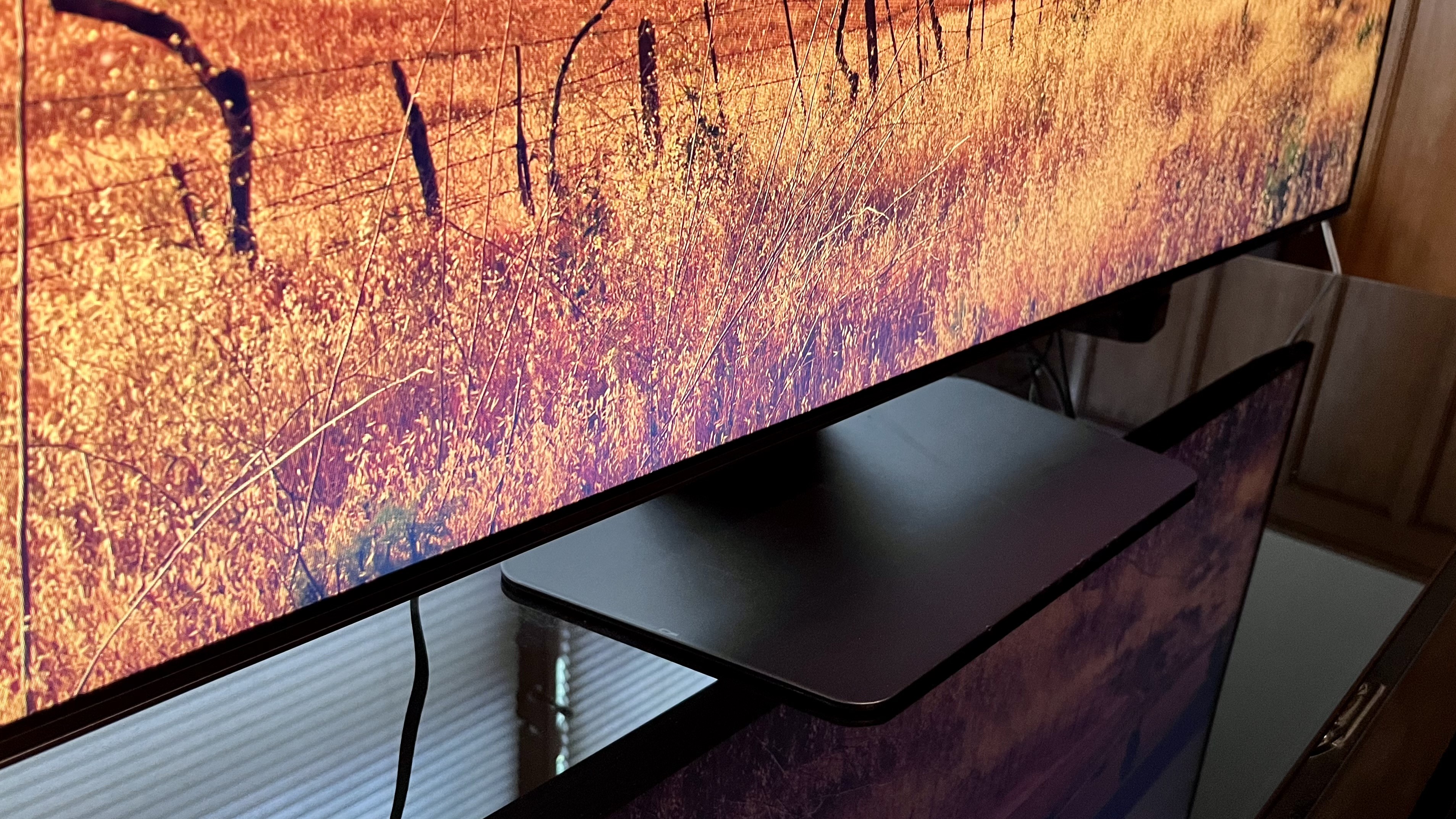
Samsung QN85C TV review: design
- NeoSlim design
- Center-mounted hexagonal plate stand
- Solar-powered remote with built-in mic
The QN85C series has the same NeoSlim design as Samsung’s QN90C series models along with the same center-mounted hexagonal plate stand. At approximately 1 inches deep, the TV is appealingly slim when viewed from the side and the stand lends firm support along with a ‘desktop monitor’ look.
A side-mounted panel houses the TV’s inputs section, which provides 4 HDMI 2.1 ports (one with eARC), along with USB, optical digital audio, and RF antenna connections. Unlike the step-up QN90C series, which has a built-in digital TV tuner that supports ATSC 3.0 ‘NextGen TV’ broadcasts, the tuner on QN85C series sets is ATSC 1.0-only.
Samsung’s compact remote control is a solar-powered handset that doesn’t require any batteries, and can also draw power from your home’s wireless network if stashed away in a dark drawer. With no backlit buttons, it can be frustrating to use in dim room lighting conditions, though many controls can be carried out onscreen using the remote’s central trackpad. A built-in mic for voice commands provides further control options.
- Design score: 4.5/5
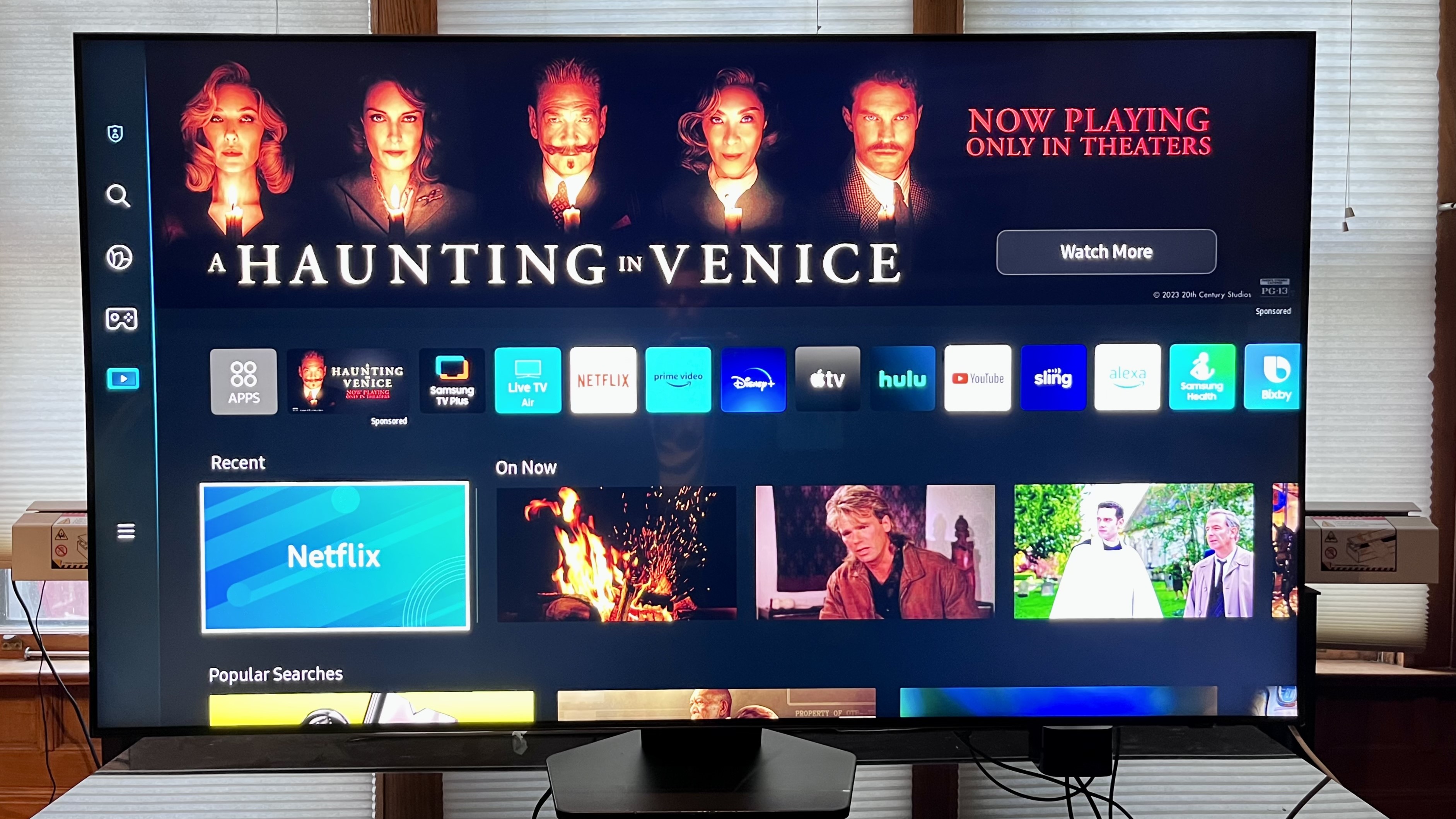
Samsung QN85C TV review: smart TV & menus
- Samsung Tizen interface
- Bixby voice command, but works with Alexa and Google
- Comprehensive, easy to navigate menus
Like most other smart TV interfaces, Samsung’s Tizen is busy, but it also offers multiple customization options. Specifically, you can edit the horizontal row of streaming apps that occupies the home screen’s center to highlight ones you’ll use most frequently. Scrolling down reveals a range of movies and TV show recommendations bunched in categories like recently added, trending now, and free to stream, with numerous options directing you to a Samsung TV Plus portal that combines live broadcast TV and free streaming channels.
Other options on the Tizen home screen include Samsung Gaming Hub and Ambient Mode, with the latter providing a range of images and abstract designs to display on your TV when it’s not in use. You can upload your own images as well via the Samsung SmartThings app which offers further control options for both the TV and supported smart home devices.
To switch inputs on the TV, you select the Connected Devices tab from the home screen and scroll through a row of icons depicting HDMI-connected sources. Selecting the Settings tab directly below calls up a different row of options for adjusting picture and sound modes, including an All Settings menu with more extensive adjustments. Selecting any of these will involve an extended sequence of button pushes, though basic controls such as brightness, contrast, and color can be more easily accessed.
- Smart TV & menus score: 4.5/5

Samsung QN85C TV review: gaming
- 4K 120Hz with VRR and FreeSync Premium Pro
- Low 9.8 ms input lag
- Samsung Gaming Hub for cloud-based gaming
Samsung Neo QLED TVs frequently rank among the best TVs for PS5 and Xbox Series X and the QN85C series is no exception. All four of its HDMI 2.1 ports handle a 4K 120Hz input from a next-gen game console and there’s also support for VRR and FreeSync Premium Pro. With the TV’s Game mode enabled, I measured input lag at 9.8ms – an impressively low number and a match for the step-up Samsung QN90C.
When in Game mode, you can press the Play/Pause button on the remote control to call up a transparent Game Bar menu with options to adjust a range of game-related settings, as well as monitor resolution and frames per second.
A distinguishing feature of Samsung TVs is the Gaming Hub, which serves as a portal to access a range of cloud gaming apps including Xbox, Nvidia GeForce Now, Amazon Luna, Utomik, Anstream Arcade, and Blacknut. Gaming Hub is also where you can connect a Bluetooth gaming controller to the TV, as well as view recently played games and game suggestions based on previously played titles.
- Gaming score: 5/5

Samsung QN85C TV review: value
- Not much cheaper than Samsung’s step-up mini-LED
- Can buy budget mini-LED models for less
- Just-average value
At $1,699 / £1,599 / AU$2,499, the Samsung QN85C represents a just-average value when compared to the company’s step-up QN90C Neo QLED, which is currently priced only slightly higher than the entry-level mini-LED. In that case, spending a bit more will get you pictures with higher peak brightness and an anti-glare screen – both factors to consider for daytime sports viewing – and it also has more advanced built-in audio and an ATSC 3.0 digital TV tuner.
The QN85C also faces stiff competition from budget mini-LED models like the Hisense U8K and TCL QM8 Class, both of which sell for substantially less than the QN85C and have a mainly similar feature set, though they lack Samsung-specific features like Wide Viewing Angle and Gaming Hub and only provide two HDMI 2.1 ports. Having reviewed both of those budget options, I’d be inclined to pick either one over the Samsung based on price alone, though I’m not a big fan of the Google TV smart interface that both use and I find the QN85C’s overall design to be superior.
- Value score: 3/5
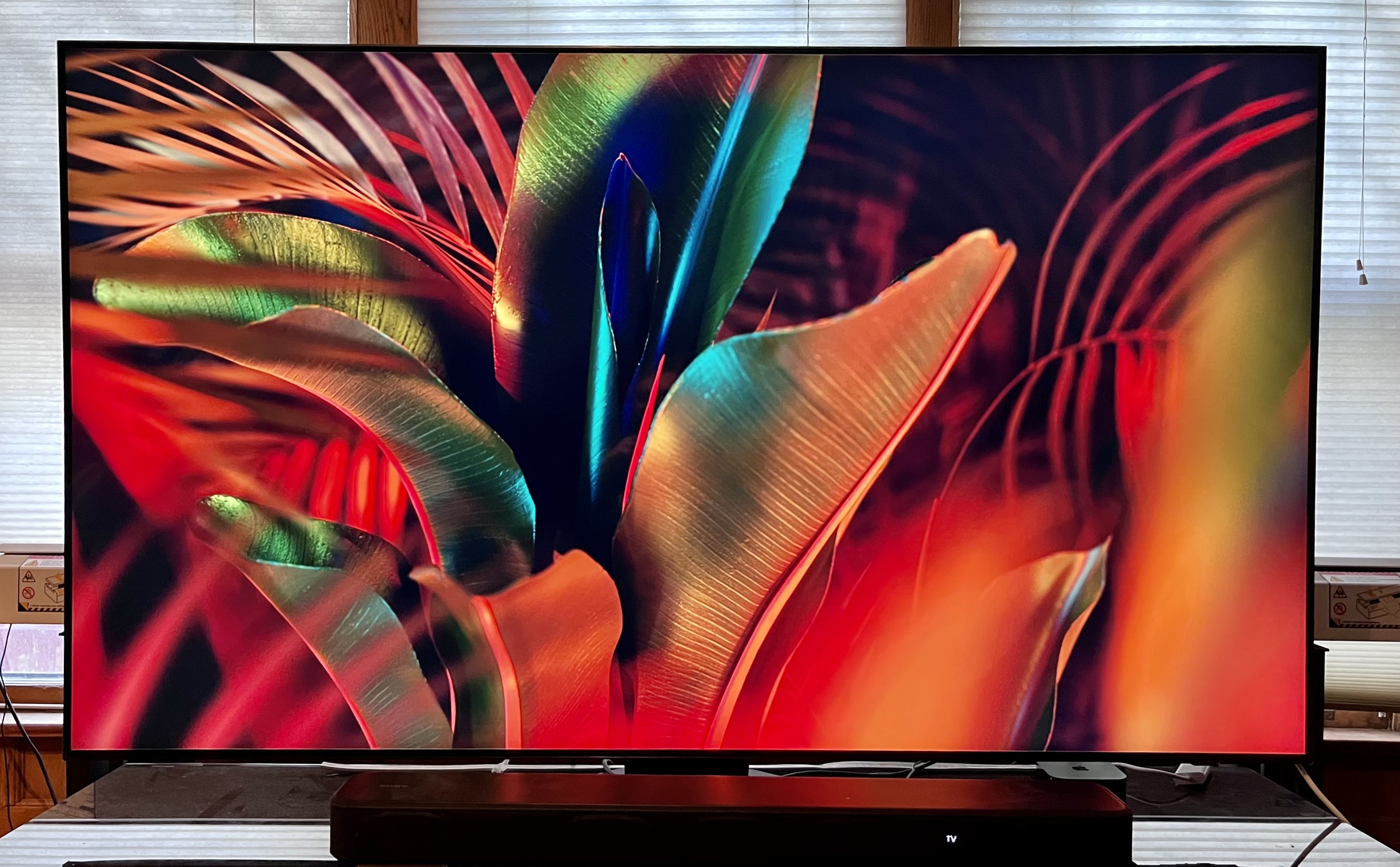
Should I buy the Samsung QN85C TV?
| Attributes | Notes | Rating |
|---|---|---|
| Features | Very good performance, though just average brightness | 4/5 |
| Picture quality | Very good performance, though just average brightness | 4/5 |
| Sound quality | Surprisingly spacious sound, but lacking in bass | 4/5 |
| Design | A very appealing design with a solar-powered remote control | 4.5/5 |
| Smart TV and menus | Very good smart interface with comprehensive picture settings | 4.5/5 |
| Gaming | Great gaming features with extensive cloud-gaming options | 5/5 |
| Value | A just-average value considering the budget mini-LED competition | 3/5 |
Buy it if...
You want a less pricey Samsung mini-LED TV
The QN85C costs less than the company’s other mini-LED-backlit models while offering many of the same features. It doesn’t match the brightness of the step-up QN90C series but the performance is otherwise similar.
You want a great TV for gaming
The QN85C has four HDMI ports that handle 4K 120Hz signals from next-gen game consoles and has VRR and FreeSync Premium Pro support. Samsung’s Game Hub is another distinguishing feature that enables cloud-based gaming.
You want to use a Samsung soundbar
While the QN85C will work with any soundbar, the TV’s Q-Symphony feature lets you combine the TV’s built-in Dolby Atmos speaker system with a select Samsung soundbar for an enhanced Atmos experience.
Don't buy it if…
You want a very bright TV for daytime viewing
The QN85C has solid overall picture performance, but it’s not as bright as Samsung’s step-up QN90C TVs and also lacks the reflection-reducing anti-glare screen found in that series and also some budget models.
Your budget is limited
The QN85C is pricier than its budget mini-LED competitors. You can expect even better peak brightness from a TCL or Hisense model, though they won’t provide the same extensive feature set as this Samsung.
You want a basic TV
While Samsung’s Tizen smart TV interface is powerful and customizable, some viewers may be put off by its complicated menu structure and extensive settings. In that case, other, cheaper options with a Roku or Google TV interface can be a better choice.
Also consider...
| Samsung QN85C | Samsung QN90C | LG C3 | Hisense U8K | |
|---|---|---|---|---|
| Price (65-inch): | $1,699 | $2,299 | $2,600 | $1,399 |
| Screen type | QLED with mini-LED | QLED with mini-LED | OLED | QLED with mini-LED |
| Refresh rate | 120Hz | 120Hz | 120Hz | 120Hz |
| HDR support | HDR10+, HDR10, HLG | HDR10+, HDR10, HLG | Dolby Vision, HDR10, HLG | HDR10+, HDR10, HLG |
| Smart TV | Tizen | Tizen | webOS 23 | Google TV |
| HDMI ports: | 4 HDMI 2.1 | 4 HDMI 2.1 | 4 HDMI 2.1 | 4 (2 x HDMI 2.1) |
| Built-in tuner | ATSC 1.0 | ATSC 3.0 | ATSC 1.0 | ATSC 3.0 |
Samsung QN90C mini-LED
Samsung’s step-up Neo QLED model also features a mini-LED backlight and has better brightness plus an anti-glare screen. You’ll pay more for those performance-related features but they’ll pay off when viewing in bright rooms.
Read our Samsung QN90C TV review
LG C3 OLED
Spending a bit more will get you this mid-range LG OLED TV, which provides all-around excellent picture quality, and similar peak brightness to the Samsung. It’s also a great option for gaming, with similarly low input lag and 4K 120Hz, VRR, FreeSync Premium Pro, and Nvidia G-Sync support.
Read our LG C3 OLED TV review
Hisense U8K mini-LED
Hisense's top TV for 2023 is a low-priced, bright mini-LED model that also features an anti-glare screen coating. There are only two HDMI 2.1 ports as opposed to the QN85C's four, but it otherwise has great gaming features like FreeSync Premium Pro and Dolby Vision gaming at 4K 144Hz.
How I tested the Samsung QN85C TV
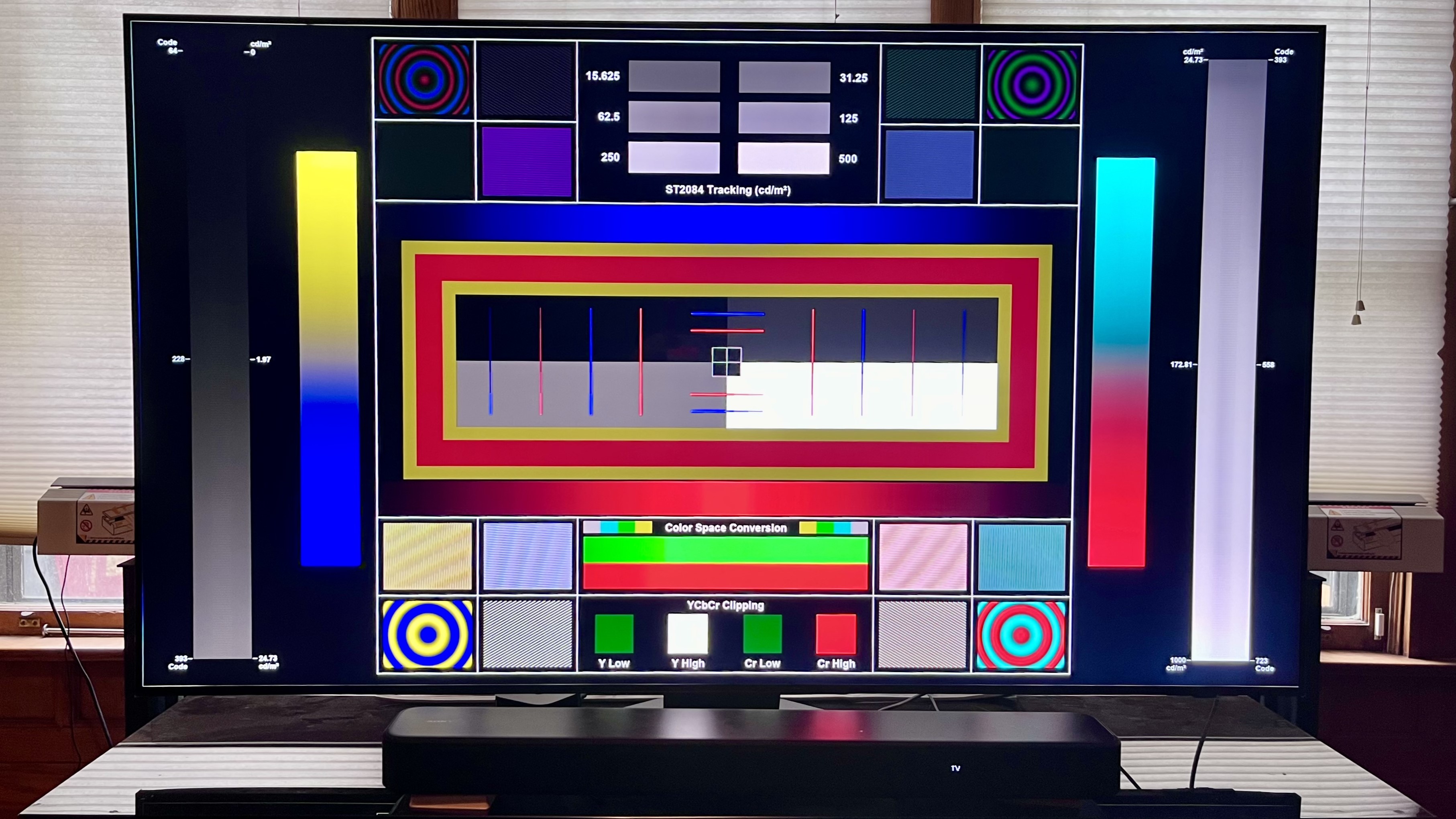
- I spent about 15 hours in total measuring and evaluating
- Measurements were made using Calman color calibration software
- A full calibration was made before proceeding with subjective tests
When I test TVs, my first step is to spend a few days using it for casual viewing for break-in and to assess the out-of-box picture presets. The next step is to select the most accurate-looking preset (typically labeled Filmmaker, Movie or Cinema) and measure the white balance (grayscale), gamma, and color point accuracy using Portrait Displays’ Calman color calibration software. The resulting measurements provide Delta-E values (the margin of error between the test pattern source and what’s shown on-screen) for each category, and they allow for an assessment of the TV’s overall accuracy.
Along with those tests, I make measurements of peak light output (recorded in nits) for both standard high-definition and 4K high dynamic range using 10% and 100% white window patterns. Coverage of DCI-P3 and BT.2020 color space is also measured, with the results providing a sense of how faithfully the TV can render the extended color range in ultra high-definition sources.
For the Samsung QN85C, I used the Calman ISF workflow, along with the TV’s advanced picture menu settings, to calibrate the image for best accuracy with SDR and HDR sources. Once done, I watched a range of reference scenes on 4K Blu-ray discs that I’ve gathered after years of TV and projector testing to assess the TV’s performance, as well as new Dolby Vision-encoded material streamed from sources like Netflix and HBO Max.
- First reviewed: September 30, 2023

Al Griffin has been writing about and reviewing A/V tech since the days LaserDiscs roamed the earth, and was previously the editor of Sound & Vision magazine.
When not reviewing the latest and greatest gear or watching movies at home, he can usually be found out and about on a bike.
